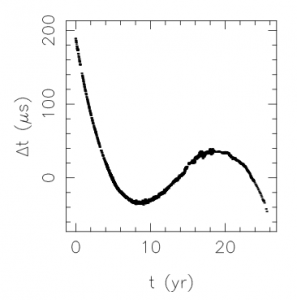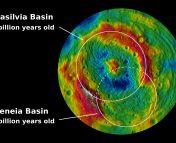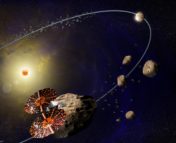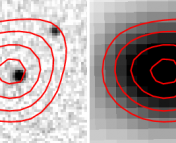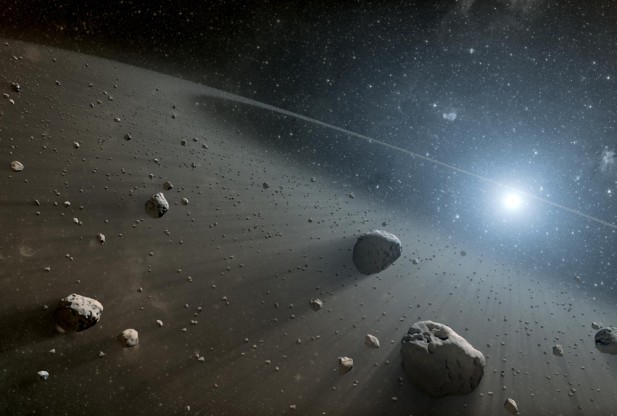
Figure 1: Asteroid belts are thought to exist throughout the Universe; as an example, here is an artist's depiction of an asteroid belt around the star Vega. Image credit: NASA/JPL-Caltech
• Title: An Asteroid Belt Interpretation for the Timing Variations of the Millisecond Pulsar B1937+21
• Authors: R. M. Shannon et al.
• First Author’s Institution: Cornell University; CSIRO Astronomy and Space Science, Australia
Background
As we’ve discussed before, pulsars (rapidly rotating and highly magnetized neutron stars) are incredibly accurate clocks. Every time the hot spot on the surface of a pulsar rotates past the Earth (see this animation), we observe a spike in the signal that corresponds to the beam of radiation from the pulsar passing over the Earth. The periods of pulsars — in particular pulsars with periods in the millisecond-range — are usually extremely regular and can therefore be very accurately measured: as Chris points out in his astrobite, the period of the pulsar PSR B1937+21 is measured to be 1.5578064688197945 +/- 0.0000000000000004 milliseconds!
The regularity of these periods make pulsars an ideal means of timing things in the Universe. In fact, using arrays of pulsars as highly accurate clocks has been proposed as a means of detecting gravitational waves (see Chris’s astrobite). The uniformity of pulsar signals also make them a means for discovering exoplanets: any irregularities in the observed pulsar period can indicate there’s something else going on in the system — such as a planet orbiting the pulsar — that causes the difference in timing.
In the curious case of PSR B1937+21, something even more subtle than this might be happening. The authors of this paper suggest that the slight irregularity in its observed period indicates that it is surrounded by an asteroid belt!
The Observation and the Theory
Using 26 years of data from the Arecibo, Effelsberg, Nançay, and Westerbork telescopes, the authors calculate the difference between the time of arrival of the pulses of PSR B1937+21 and the time we would expect them to arrive, assuming that the pulsar functions as an exact clock. We call this difference the timing residuals. The microsecond residuals they find (see Figure 2) are too small and incoherent to be blamed on a few large objects, like planets, orbiting the pulsar … but they might be consistent with a lot of small objects orbiting the pulsar, collectively influencing the signal. Each individual object would pull on the pulsar a little, introducing a small change in the pulsar’s orbit with a period and magnitude that depends on the mass of the small object and the radius of its orbit. The net sum of all of the objects pulling on the pulsar could cause a gradual change in when the pulsar’s pulses arrive. Thus, the authors suggest that the cause of the timing residuals that we observe is an asteroid belt surrounding the pulsar.
This theory isn’t entirely out of the blue. In the past, pulsars have been discovered with Moon- and Earth-mass planets in orbits around them. There’s also evidence for debris disks around other neutron stars, and some white dwarfs are thought to be surrounded by asteroid belts, proving that rocky bodies can exist in the rather extreme environments around post-main-sequence stars. Indeed, asteroid belts are by no means limited to our own solar system, as evidenced by belts that have been discovered around stars like Vega (see Figure 1) and AU Mic.
Constraining and Testing the Model
Once they propose this theory, the authors set about very carefully constraining and testing it. First they show that the high luminiosity of a pulsar would effectively vaporize any asteroids in the inner region of the disk, so that there could be no rocky bodies within 0.5 AU of the pulsar (known as the rock line), and no icy materials within about 16 AU. They then demonstrate that the disk would exist over a wider range of radii than the asteroid belt in our solar system due to the lack of shepherding bodies. They investigate disk stability and prove that such an asteroid belt could persist to the current age of the pulsar, and they show that for the belt to be consistent with observations of PSR B1937+21, its mass would be around 0.05 Earth masses (roughly the same as the mass of our solar system’s asteroid belt).
The authors then discuss ways to observationally test the asteroid-belt model — and that’s where things get tricky. It turns out that verifying the presence of an asteroid belt around a pulsar is much harder than you might think. You could try to detect the individual signals due to the larger objects in the belt, but it’d be next to impossible to distinguish that from noise. You could look for infrared emission from the disk, but you’d need tens to hundreds of hours of time with a telescope like JWST (which, of course, doesn’t yet exist). Looking for the reflection of the pulsar beam off of the particles in the asteroid belt isn’t possible currently, but might become more possible as upgrades to large radio telescope arrays occur in the next few years. And you could always get tricky and look for some more subtle signs — for instance, you could potentially detect the rock line by looking for a low-end cutoff in the periodicity of the timing residuals.
Conclusion
The authors argue that though it’s difficult to prove observationally that the timing residuals of PSR B1937+21 are the effect of an asteroid belt around the pulsar, it is equally difficult to argue that there wouldn’t be random debris left over in this system to form a disk. As simple as this reasoning might sound, they have a point: given the evidence that we have for debris disks, asteroids and planetesimals around other stars, neutron stars, and white dwarfs, this is a pretty plausible explanation.
The implications of this model are important: the timing residuals from an asteroid belt are unfortunately very similar to the signal we would expect a pulsar array to pick up from gravitational waves. This means that as we investigate the possibility of using pulsar arrays for gravitational wave detection, we have to carefully account for false signals that might come something like this asteroid belt!

